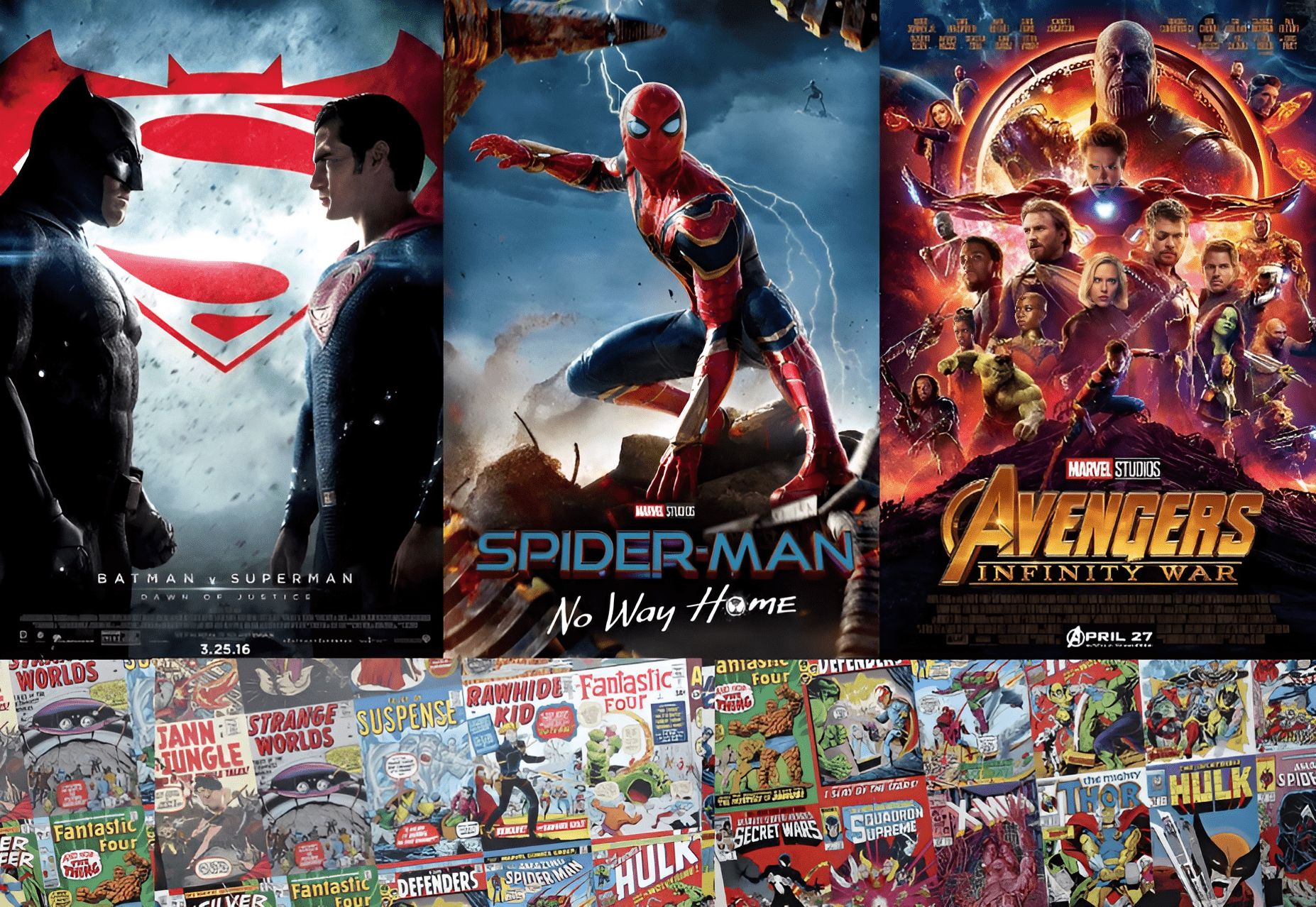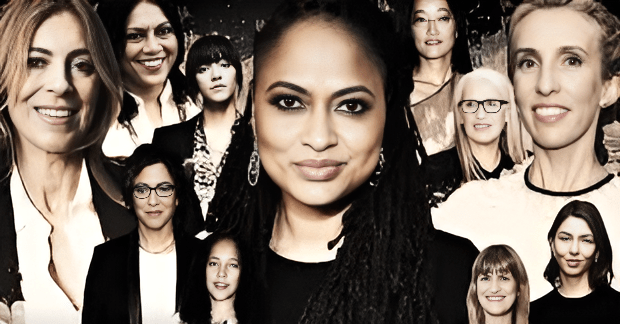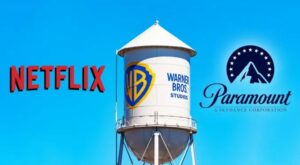The Evolution of Superhero Films: From Comics to Blockbusters. Once dismissed as juvenile entertainment, superhero stories have emerged as one of the most profitable and culturally impactful genres in global cinema. The rise of superhero films from comic book panels to billion-dollar cinematic universes mirrors not only the evolution of the entertainment industry but also shifts in audience preferences, storytelling techniques, and even technology. From the early days of Superman’s black-and-white serials to the Marvel Cinematic Universe’s multi-billion-dollar success, the journey of superheroes is nothing short of heroic.
Origins of Superheroes in Film
The first superhero to make a mark on the screen was Superman, who appeared in animated shorts during the 1940s, eventually landing his first live-action feature in 1978 starring Christopher Reeve. This film, directed by Richard Donner, set a new benchmark for what superhero movies could be — earnest, dramatic, and visually ambitious for its time. While it lacked the CGI magic of modern-day hits, its character-driven storytelling laid the groundwork for what would follow.
Following Superman’s success, Batman (1989), directed by Tim Burton, brought a darker tone to the genre. Michael Keaton’s Batman and Jack Nicholson’s Joker offered a mix of psychological depth and gothic atmosphere. It was during this era that Hollywood began to take the genre seriously, recognizing its box office potential and mass appeal.
The 1990s: A Decade of Struggle and Experimentation
Despite initial successes, the 1990s were a turbulent time for superhero films. While we saw moderate hits like Blade (1998), many films failed to balance campy aesthetics with authentic storytelling. Projects like Batman & Robin (1997), often criticized for its over-the-top style and lack of coherence, nearly derailed the genre altogether.
However, the 90s were also important for experimentation. The Mask, Spawn, and Darkman offered alternative takes on superheroes, foreshadowing the genre’s eventual expansion beyond capes and tights. Though not all were box office hits, they played a key role in pushing creative boundaries.
The 2000s: The Birth of the Modern Superhero Era
The 2000s marked a significant turning point, primarily led by Sam Raimi’s Spider-Man (2002) and X-Men (2000). Both franchises grounded their stories in human emotion, identity struggles, and moral ambiguity — making the characters more relatable and the stakes more personal.
Spider-Man 2 (2004) is often cited as one of the best superhero films ever made, balancing action with heart and character development. During this era, studios also realized that superhero movies could be both critically and commercially successful if handled with care.
Meanwhile, Christopher Nolan’s Batman trilogy (2005–2012) redefined the superhero genre. Batman Begins and especially The Dark Knight (2008) demonstrated that superhero films could deliver layered narratives and even Oscar-worthy performances, as seen with Heath Ledger’s portrayal of the Joker.
The Marvel Cinematic Universe and the Age of Franchises
In 2008, Marvel Studios launched what would become the most successful cinematic franchise of all time: the Marvel Cinematic Universe (MCU). It began humbly with Iron Man, starring Robert Downey Jr., and evolved into an interconnected universe culminating in Avengers: Endgame (2019) — a film that grossed nearly $3 billion globally.
The MCU introduced a new template: interconnected storylines across multiple characters and films, supported by massive budgets and strategic release planning. It wasn’t just about individual heroes anymore; it was about building worlds. This approach brought fans back to theaters year after year, eagerly awaiting post-credit scenes and crossover events.
While the MCU thrived, DC also attempted to build its own cinematic universe with mixed success. Films like Man of Steel and Wonder Woman garnered praise, while others like Justice League received lukewarm responses. However, stand-alone projects like Joker (2019) and The Batman (2022) showed that there was still room for unique storytelling within the superhero framework.
Technology: The Superpower Behind the Scenes
One cannot discuss the evolution of superhero films without highlighting the role of technology. The advancement of CGI, motion capture, and green screen technology has made it possible to depict complex, larger-than-life characters and interdimensional battles convincingly. Filmmakers now have the tools to bring iconic comic book moments to life — whether it’s Doctor Strange bending realities or Thanos wiping out half the universe. Audiences expect high visual fidelity, and studios deliver with increasing sophistication. Even indie superhero films have benefited from lower production costs due to affordable digital technology, allowing for creative risks without massive budgets.
The Genre’s Cultural Impact
Superhero films are no longer just entertainment. They are cultural events. Premieres attract massive media coverage, merchandise sales break records, and fans build communities online around fan theories and analyses. They also spark real-world conversations — about race (Black Panther), mental health (Joker), female empowerment (Wonder Woman), and LGBTQ+ representation (Eternals). The genre has become a mirror for societal issues, using extraordinary characters to tell very human stories.
The Criticisms: Fatigue and Formul
As with any trend, superhero films face criticism. Many argue that the market is oversaturated and that the “Marvel formula” has made storytelling predictable. There’s a growing demand for more artistic and thematic variety, and some filmmakers like Martin Scorsese have even publicly questioned whether superhero films are “cinema.” Despite this, the audience for these films remains strong, particularly among younger viewers. Studios are now experimenting with blending genres (e.g., WandaVision mixing sitcoms and sci-fi) and focusing on more diverse characters and stories.
What’s Next for Superhero Films?
The future of superhero films lies in innovation. Studios are now investing in more inclusive storytelling, multiverse theories, and cross-platform narratives involving TV and streaming (e.g., Disney+ shows like Loki, Moon Knight). There’s also a growing focus on anti-heroes, psychological thrillers, and social commentary — proof that the genre is evolving in response to audience maturity and global conversations. In a world of reboots and reimaginings, the superhero genre will likely continue to thrive — not by repeating old successes, but by redefining what it means to be a hero in the 21st centur
Final Thoughts: More Than Just Capes
From humble comic book origins to dominating box office charts, superhero films have grown with their audience. They’ve moved beyond explosions and special effects, evolving into meaningful stories that reflect human struggles, triumphs, and the need for hope. For fans and creators alike, the genre remains a powerful space where imagination, storytelling, and culture collide — and its story is far from over.





























